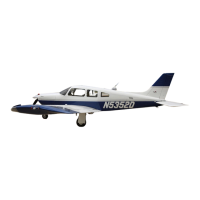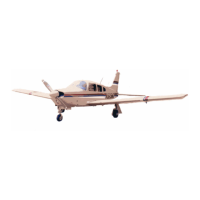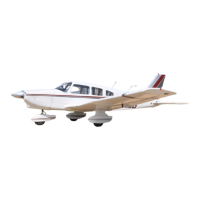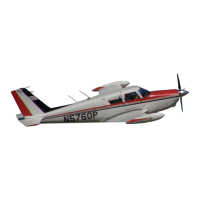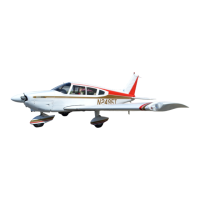B. Connect surgical tubing to the fuel flow (deck pressure) bulkhead fitting and evacuate the line
until a 10 gallon per hour (maximum) positive indication on the fuel flow gauge is obtained.
Clamp off the tubing and observe the gauge for a steady reading. Any change of this reading
would indicate a leak in the system, which must be repaired prior to continuing with the setup
procedures.
—NOTE—
A static system test unit can be used to leak check these lines.
C. Check the fuel pressure and manifold pressure lines in the same manner as given in Step B, except
apply positive pressure to the lines. Do not exceed 4 pounds per square inch (psi) on the fuel
pressure gauge, or 4 inches of mercury (In. Hg.) increase on the manifold pressure gauge.
D. Visually inspect manifold pressure, deck pressure and fuel pressure lines forward of the engine
rear baffle for general condition which could cause leakage. Check all “B” nuts for tightness.
E. Reconnect the manifold pressure, fuel flow and fuel pressure lines at the bulkhead fitting.
F. Disconnect the main fuel supply line to the engine driven fuel pump, at the rear engine baffle and
using the auxiliary fuel pump, pump out approximately one quart of gasoline; then reconnect the
line.
G. Using the electric fuel boost pump, purge the air from the fuel flow gauge line at the back of the
instrument; then reconnect the line.
2. Exhaust Bypass Check: Ascertain that the exhaust bypass adjusting screw has from eight to nine
threads showing below the jam nut. This screw is preset at the factory and should not require any adjustment,
unless it is known that critical altitude is not correct; in this case, use procedure given in Step 11. (Refer to
Figure 73-6.)
3. Idle Performance Check:
—NOTE—
It is extremely important that the engine be thoroughly warmed
up. However, excessive engine temperatures must be avoided
since setup temperature must closely parallel temperatures in
flight.
A. Remove the cap from the tee fitting on the right side of the throttle body. (Refer to Figure 73-4.)
B. Install a 0-60 psig calibrated pressure gauge (vented to the atmosphere) to the tee, using a suitable
length of flexible tube. The gauge should always be at the same lever as the fuel manifold valve
when checking fuel pressure.
C. Purge the air from the tube.
—CAUTION—
During all engine operations outlined in these instructions,
exercise CAUTION to avoid harm or damage to personnel and
equipment by propeller blast and rotating propeller blades.
Effectivity 73-20-02
PA-28RT-201T Page 73-05
December 1, 1978
3C18
PIPER AIRCRAFT
PA-28RT-201 / 201T
MAINTENANCE MANUAL
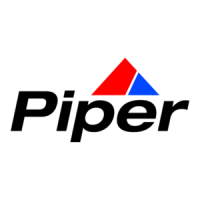
